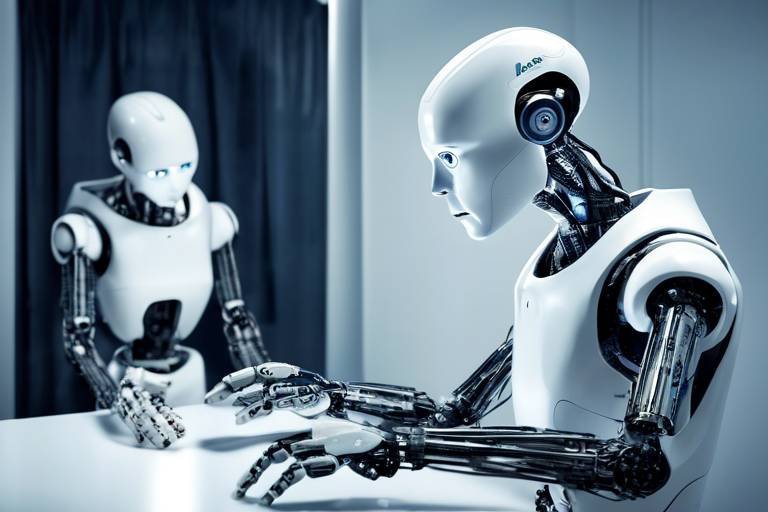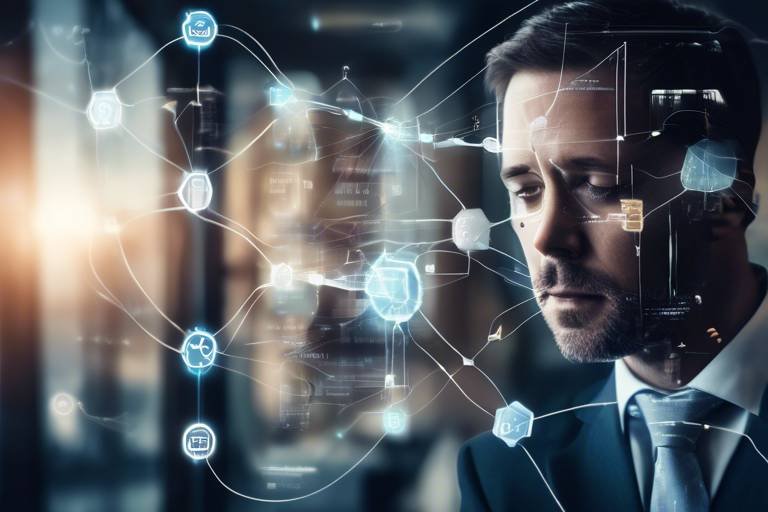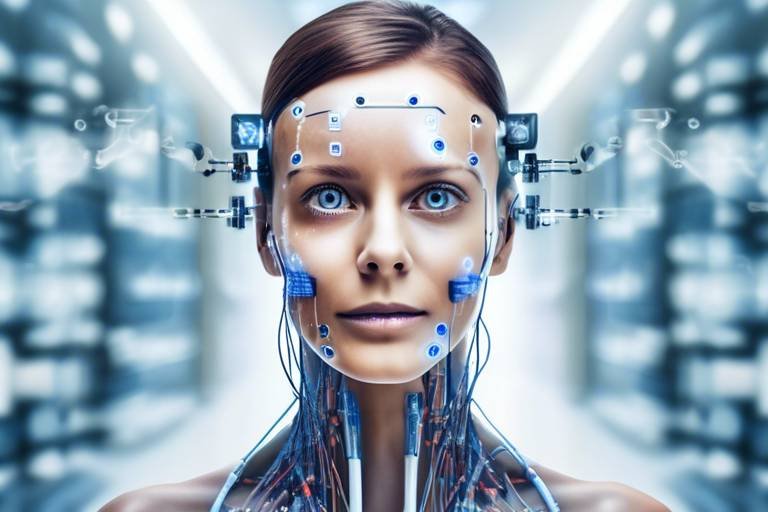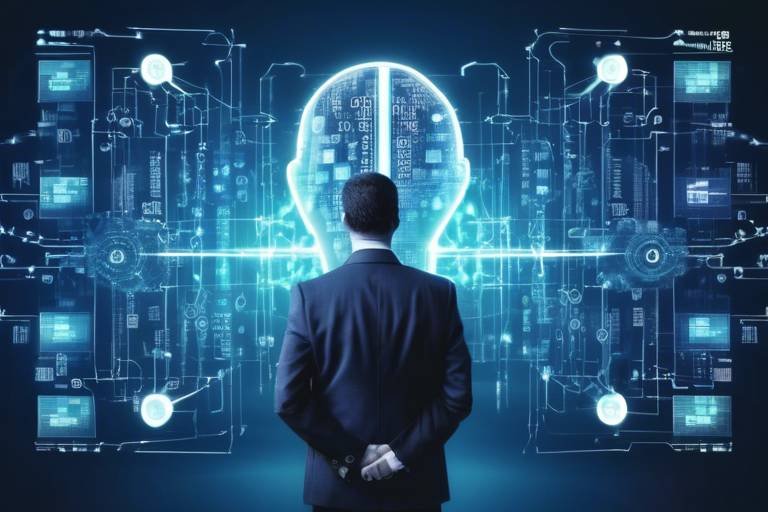Pros and Cons of AI in Education
In today's fast-paced world, the integration of artificial intelligence (AI) into education has sparked a heated debate. On one hand, we have the promise of revolutionary benefits that could transform the learning experience for students and educators alike. On the other hand, there are significant concerns that cannot be overlooked. As we delve into the pros and cons of AI in education, it's essential to examine both sides of the coin to understand its full impact.
Let's start with the benefits. AI in education is not just a buzzword; it represents a shift towards personalized learning. Imagine a classroom where each student's unique learning style is recognized and catered to. AI can analyze a student's performance, learning pace, and preferences, creating a tailored educational experience that maximizes their potential. This level of personalization can lead to improved academic outcomes and heightened student engagement.
Moreover, AI enhances administrative efficiency. Teachers often find themselves bogged down by paperwork and administrative tasks, which can detract from their primary role of educating students. With AI tools automating routine tasks, educators can spend more time focusing on mentorship and fostering relationships with their students. This shift not only benefits teachers but also enriches the overall learning environment.
Accessibility is another crucial advantage of AI in education. It can bridge gaps for diverse learners by providing customized resources and support. For instance, students with learning disabilities can benefit from AI-driven tools that adapt to their needs, ensuring that education is inclusive and equitable for all.
However, as we celebrate these advancements, we must also acknowledge the challenges associated with implementing AI in educational settings. One significant concern is the cost of integrating AI technologies. Schools often operate on tight budgets, and investing in AI can be a daunting financial commitment. Additionally, the need for proper training for educators to effectively utilize these technologies cannot be underestimated. Without adequate training, the potential of AI may remain untapped.
Data privacy is another pressing issue. The use of AI in education often involves collecting and analyzing vast amounts of student data. This raises legitimate concerns about how this data is stored, who has access to it, and how it is used. As we incorporate AI into the educational landscape, it is crucial to establish stringent measures to protect sensitive information from breaches or misuse.
Furthermore, the integration of AI is reshaping the roles of teachers. While it allows educators to focus more on mentorship and less on administrative tasks, it also raises questions about job displacement. As AI systems take on more responsibilities traditionally held by teachers, there is a growing concern about the future of teaching roles. Will educators adapt, or will they find themselves replaced by machines?
In conclusion, the integration of AI in education presents a complex landscape filled with both opportunities and challenges. While the potential benefits of personalized learning, enhanced efficiency, and improved accessibility are remarkable, we must remain vigilant about the challenges of cost, data privacy, and the evolving role of educators. As we look to the future, it is essential to strike a balance that harnesses the advantages of AI while addressing the concerns that accompany its implementation.
- What are the main benefits of AI in education? AI offers personalized learning experiences, enhances administrative efficiency, and improves accessibility for diverse learners.
- What challenges does AI face in educational settings? High costs, data privacy concerns, and the need for proper training for educators are significant challenges.
- How does AI personalize learning? AI analyzes student performance data to create customized learning paths tailored to individual needs and learning styles.
- What are the data privacy concerns related to AI in education? The collection and analysis of student data raise issues about the protection of sensitive information from breaches or misuse.
- Will AI replace teachers? While AI can assist in administrative tasks, it is unlikely to fully replace teachers, as their mentorship and human interaction are irreplaceable.

Benefits of AI in Education
Artificial Intelligence (AI) is rapidly transforming the educational landscape, bringing forth a plethora of benefits that enhance the learning experience for both students and educators. One of the most significant advantages of AI is its ability to provide personalized learning experiences. Imagine walking into a classroom where each student is engaged in a learning path tailored specifically to their needs and interests. AI can analyze individual performance data and adapt the curriculum accordingly, ensuring that no student is left behind. This level of customization not only fosters better academic outcomes but also boosts student engagement and motivation.
Moreover, AI contributes to enhanced administrative efficiency. Teachers often find themselves bogged down by administrative tasks, leaving them with less time to focus on what truly matters—teaching. AI can automate various administrative functions, such as grading, scheduling, and even tracking attendance. This allows educators to redirect their energies toward mentoring and engaging with students, creating a more dynamic and interactive classroom environment.
Another noteworthy benefit of AI in education is its potential to improve accessibility for diverse learners. Students with disabilities or those who require special accommodations can greatly benefit from AI-driven tools that offer customized resources. For instance, AI can provide real-time translation services, adaptive learning platforms, and even speech recognition software to assist students with different learning needs. This inclusivity ensures that education is not a one-size-fits-all model, but rather a tailored experience for every individual.
Additionally, AI can facilitate data-driven insights for educators. By analyzing vast amounts of student data, AI systems can identify trends and patterns that might go unnoticed. For example, if a significant number of students struggle with a particular concept, teachers can adjust their instructional strategies accordingly. This proactive approach not only enhances learning but also increases retention rates, ensuring that students grasp essential skills and knowledge.
| Benefits of AI in Education | Description |
|---|---|
| Personalized Learning | Customizes educational experiences based on individual student needs. |
| Administrative Efficiency | Automates tasks like grading and scheduling to free up teacher time. |
| Improved Accessibility | Offers tools for diverse learners, enhancing inclusivity. |
| Data-Driven Insights | Analyzes student performance to guide instructional improvements. |
In conclusion, the integration of AI in education is not just about technology; it’s about creating a more inclusive, efficient, and engaging learning environment. As we continue to explore the possibilities that AI offers, it’s clear that the future of education is not only bright but also tailored to meet the diverse needs of all students.
- How does AI personalize learning? AI analyzes student data to create customized learning experiences that cater to individual needs and learning styles.
- What administrative tasks can AI automate? AI can handle grading, scheduling, attendance tracking, and more, allowing teachers to focus on teaching.
- Can AI help students with disabilities? Yes, AI offers tools like speech recognition and real-time translation to assist diverse learners.
- How does AI improve data analysis for teachers? AI identifies trends in student performance, helping educators adjust their teaching strategies effectively.

Challenges of Implementing AI
This article explores the advantages and disadvantages of integrating artificial intelligence into educational settings, highlighting its impact on teaching methodologies, student engagement, and overall learning experiences.
AI offers numerous benefits, including personalized learning experiences, enhanced administrative efficiency, and improved accessibility for diverse learners, making education more tailored and inclusive for all students.
Despite the exciting possibilities that AI brings to education, there are significant hurdles to overcome. One of the primary challenges is the high costs associated with integrating AI technologies into existing educational frameworks. Schools and institutions often struggle to allocate budgets for advanced technology, which can lead to disparities in access to AI tools. Additionally, the initial investment for hardware, software, and ongoing maintenance can be daunting, particularly for underfunded schools.
Another major concern is data privacy. With AI systems collecting and analyzing vast amounts of student data, the risk of data breaches becomes a pressing issue. Schools must implement stringent privacy measures to protect sensitive information from unauthorized access and misuse. This not only requires financial resources but also a commitment to ongoing training and awareness for staff and students alike.
Furthermore, there is a critical need for proper training for educators. Many teachers may feel overwhelmed by the rapid pace of technological change, leading to resistance in adopting AI tools. Without adequate training, educators might struggle to effectively utilize AI systems, which can hinder the potential benefits these technologies offer. Institutions must prioritize professional development to ensure that teachers are equipped to integrate AI seamlessly into their teaching practices.
In summary, while the integration of AI in education has the potential to revolutionize learning, it is essential to address these challenges head-on. By tackling issues of cost, data privacy, and training, educational institutions can pave the way for a more effective and inclusive learning environment.
AI's integration into classrooms is reshaping teacher roles, allowing educators to focus more on mentorship and less on administrative tasks, but it also raises questions about job displacement and the future of teaching.
AI tools can augment traditional teaching methods by providing resources and support, enabling teachers to enhance their instructional strategies and engage students more effectively.
As AI systems take on more tasks traditionally performed by teachers, there are growing concerns about potential job displacement and the need for educators to adapt to new roles in the classroom.
- What are the main benefits of AI in education? AI can provide personalized learning experiences, improve administrative efficiency, and enhance accessibility for diverse learners.
- What challenges does AI face in educational settings? Major challenges include high costs, data privacy concerns, and the need for proper training for educators.
- How can AI improve student engagement? By analyzing performance data, AI can create customized learning paths that keep students challenged and engaged.
- Will AI replace teachers? While AI can assist in many areas, it is more likely to augment teachers' roles rather than replace them entirely.

Personalized Learning Experiences
Imagine walking into a classroom where every student is engaged, not because they're forced to be, but because the material is tailored just for them. This is the promise of powered by artificial intelligence (AI). By leveraging advanced algorithms, AI can analyze a student’s performance data, learning preferences, and even emotional responses to create a customized learning path. This means that instead of a one-size-fits-all approach, each student receives a unique educational experience that caters to their individual needs.
For instance, consider a student who struggles with mathematics. Traditional teaching methods might not address their specific challenges, leading to frustration and disengagement. However, with AI, the system can pinpoint exactly where they are having difficulty—be it in basic arithmetic or complex problem-solving. It can then adjust the curriculum accordingly, offering additional resources or alternative explanations that resonate with that student’s learning style. This level of personalization not only enhances understanding but also boosts confidence, making learning a more enjoyable journey.
Furthermore, the data-driven insights provided by AI can help educators gain a deeper understanding of their students. For example, teachers can receive reports that highlight patterns in student performance, such as common areas of struggle or topics that spark interest. This allows them to tailor their teaching methods and interventions more effectively. Imagine a teacher being able to identify that a majority of their class is struggling with a particular concept—AI makes this possible by providing real-time feedback that can be acted upon immediately.
Additionally, AI can facilitate adaptive learning technologies that adjust content and pacing based on real-time student feedback. This ensures that learners remain challenged yet supported throughout their educational journey. For example, if a student quickly masters a topic, the AI can introduce more advanced material, keeping them engaged and preventing boredom. Conversely, if a student is struggling, the system can slow down and offer more foundational resources, ensuring that no one is left behind.
In essence, the integration of AI into education is not just about technology; it's about creating a more inclusive and effective learning environment. By personalizing learning experiences, AI empowers students to take ownership of their education, fostering a sense of autonomy and motivation. The classroom of the future is one where every student feels seen, understood, and equipped to succeed.
- What is personalized learning? Personalized learning is an educational approach that tailors learning experiences to individual student needs, preferences, and interests.
- How does AI facilitate personalized learning? AI analyzes student data to create customized learning paths, adapting content and pacing to meet each student's unique learning style.
- Are there any drawbacks to personalized learning? While personalized learning offers many benefits, challenges include potential data privacy concerns and the need for proper training for educators.
- Can AI replace teachers? No, AI is designed to augment the teaching process, allowing educators to focus more on mentorship and less on administrative tasks.

Adaptive Learning Technologies
Adaptive learning technologies are revolutionizing the educational landscape by offering a more personalized approach to learning. Imagine a classroom where each student is not just a face in the crowd, but rather an individual with unique needs, strengths, and challenges. This is the promise of adaptive learning, where artificial intelligence tailors educational experiences to fit the learner's pace and style. By utilizing advanced algorithms, these technologies analyze real-time data on student performance, allowing them to adjust the difficulty level of tasks, suggest resources, and provide feedback instantaneously.
For instance, consider a student who struggles with algebra. Instead of moving on to geometry, an adaptive learning system can identify this gap and offer additional practice problems, interactive tutorials, or even video lessons specifically focused on algebraic concepts. This ensures that the student builds a strong foundation before tackling more complex subjects. As a result, students can engage with the material at their own pace, leading to a deeper understanding and retention of information.
Moreover, adaptive learning technologies can be particularly beneficial in diverse classrooms where students come from various backgrounds and possess different learning styles. These systems can cater to visual learners with interactive graphics, auditory learners with podcasts, and kinesthetic learners with hands-on activities. By providing a variety of learning modalities, adaptive learning fosters an inclusive environment that encourages all students to thrive.
However, while the advantages of adaptive learning technologies are clear, it’s essential to acknowledge that their implementation requires careful consideration. Educational institutions must ensure that these technologies are accessible to all students, regardless of their socioeconomic status, to avoid widening the existing educational gap. Additionally, teachers need to be adequately trained to interpret the data provided by these systems and to integrate them effectively into their teaching practices.
In conclusion, adaptive learning technologies represent a significant leap forward in educational methodologies. By focusing on individual learning paths, they not only enhance student engagement but also improve academic outcomes. As we continue to explore the potential of AI in education, it is crucial to balance innovation with inclusivity, ensuring that every learner has the opportunity to succeed.
- What are adaptive learning technologies? Adaptive learning technologies are educational tools that use AI to personalize learning experiences based on individual student performance and needs.
- How do these technologies benefit students? They provide tailored learning paths, ensuring that each student can learn at their own pace and style, which leads to better understanding and retention.
- What challenges are associated with implementing adaptive learning? Challenges include ensuring accessibility for all students, providing adequate training for educators, and managing data privacy concerns.
- Can adaptive learning technologies replace teachers? No, they are designed to augment teaching methods, allowing educators to focus more on mentorship and less on administrative tasks.

Data-Driven Insights
In the rapidly evolving landscape of education, have emerged as a game-changer, powered by artificial intelligence (AI). Imagine having a tool that not only tracks a student's performance but also interprets that data to provide actionable strategies for improvement. This is precisely what AI brings to the table. By analyzing vast amounts of data, AI systems can identify patterns in student behavior, learning preferences, and academic performance, allowing educators to tailor their teaching methods accordingly.
For instance, consider a classroom where each student learns at a different pace. Traditional teaching methods often struggle to address this diversity. However, with AI, teachers can receive real-time feedback on each student’s progress. This feedback can highlight areas where a student may be excelling or struggling, enabling educators to intervene promptly. This proactive approach not only enhances learning outcomes but also boosts student confidence, as they feel supported in their educational journey.
Moreover, the insights generated by AI are not just beneficial for individual students. They also provide a broader understanding of trends within the classroom or even across entire schools. For example, if a significant number of students are underperforming in a particular subject, educators can investigate the curriculum or teaching methods used, leading to improvements that benefit all learners. This kind of data-driven approach fosters a culture of continuous improvement in educational settings.
To illustrate the impact of data-driven insights, consider the following table that outlines the key benefits of AI analysis in educational contexts:
| Benefits | Description |
|---|---|
| Personalized Feedback | AI analyzes student data to provide tailored feedback, enhancing individual learning experiences. |
| Trend Analysis | Identifies common challenges faced by students, allowing for curriculum adjustments. |
| Enhanced Engagement | Data insights help create more engaging and relevant learning materials based on student interests. |
| Informed Decision-Making | Educators can make data-informed decisions regarding teaching strategies and resource allocation. |
However, it’s essential to approach these insights with a critical eye. While AI can provide valuable data, the interpretation and implementation of this information still rely on human judgment. Educators must be equipped not only with the tools but also with the skills to interpret data effectively. This means that professional development and training in data literacy are crucial for teachers to harness the full potential of AI in education.
In conclusion, the integration of through AI in education is reshaping the way we understand and enhance learning. By leveraging these insights, educators can create a more responsive and effective learning environment that meets the diverse needs of all students. The future of education is not just about technology; it's about how we use that technology to foster a deeper understanding and connection with learners.
- What are data-driven insights in education?
Data-driven insights refer to the information derived from analyzing student performance data, which helps educators tailor their teaching methods to improve learning outcomes. - How does AI enhance personalized learning?
AI analyzes individual student data to create customized learning paths, addressing specific needs and learning styles. - Are there any risks associated with using AI in education?
Yes, there are concerns about data privacy and the need for proper training for educators to effectively utilize AI technologies.

Data Privacy Concerns
As we dive deeper into the realm of artificial intelligence (AI) in education, one of the most pressing issues that arises is data privacy. With the increasing reliance on technology, educational institutions are collecting vast amounts of data from students. This data can include everything from academic performance and behavioral patterns to personal information. While this data can enhance learning experiences, it also opens the door to significant risks if not handled properly.
Imagine a classroom where every student's learning style, strengths, and weaknesses are meticulously recorded and analyzed. This sounds revolutionary, right? However, what happens to that data? Who has access to it? How is it being protected? These questions are vital because the potential for data breaches looms large. In fact, educational institutions are prime targets for cyberattacks due to the sensitive nature of the information they hold.
To put it in perspective, let’s consider a few key points regarding data privacy concerns:
- Data Collection: The sheer volume of data collected can be overwhelming. From assessments to interactions with AI systems, every click and response can be tracked.
- Data Ownership: Who owns the data? Is it the students, the schools, or the tech companies? This ambiguity can lead to disputes and ethical dilemmas.
- Potential Misuse: There’s always a risk that data could be misused for purposes beyond education, such as targeted advertising or even surveillance.
Moreover, the implementation of AI in education demands strict compliance with data protection regulations, such as the Family Educational Rights and Privacy Act (FERPA) in the U.S. and the General Data Protection Regulation (GDPR) in Europe. These laws are designed to safeguard student information, but they also require institutions to invest in robust security measures and training to ensure compliance.
Another layer of complexity arises when we consider the ethical implications of AI in education. The technology's ability to analyze and predict student behavior can lead to biased outcomes if the underlying algorithms are not carefully designed. For instance, if an AI system is trained on biased data, it may perpetuate those biases, leading to unfair treatment of certain groups of students.
In conclusion, while AI has the potential to transform education for the better, we must tread carefully. The balance between leveraging technology for personalized learning and safeguarding student privacy is delicate and requires ongoing dialogue among educators, technologists, and policymakers. As we embrace the future, prioritizing data privacy will be crucial in building trust and ensuring that the benefits of AI in education are realized without compromising our students' rights.
- What types of data are collected by AI in education?
AI systems can collect various data types, including academic performance, engagement metrics, and personal information. - How can schools ensure data privacy?
Schools can implement strong data protection policies, conduct regular audits, and ensure compliance with relevant regulations. - What are the risks of data breaches in education?
Data breaches can lead to identity theft, misuse of personal information, and loss of trust in educational institutions.

Impact on Teacher Roles
The integration of artificial intelligence (AI) into educational environments is not just a trend; it's a transformative force that is reshaping the very fabric of teaching. As AI technologies become more prevalent, teachers find themselves stepping into new roles that extend beyond traditional instruction. Imagine a classroom where AI takes care of administrative tasks, allowing educators to focus on what they do best: inspiring and mentoring students. This shift can lead to a more enriched learning environment, but it also brings up some important questions about the future of teaching and the role of educators.
One of the most exciting aspects of AI in education is its potential to augment teaching methods. AI tools can provide teachers with invaluable resources, such as real-time data on student performance and tailored instructional strategies. For example, an AI system could analyze a student's progress and suggest specific interventions that a teacher can implement. This not only enhances the educational experience for students but also empowers teachers to be more effective in their roles. Instead of spending hours grading papers or managing administrative tasks, educators can dedicate more time to engaging with students and facilitating deeper learning experiences.
However, with these benefits come concerns about job displacement. As AI systems take on more responsibilities, there is a palpable anxiety among educators about the possibility of being replaced or rendered obsolete. While it's true that AI can handle many tasks, it cannot replicate the human touch that teachers bring to the classroom. The emotional support, mentorship, and personal connections that educators forge with their students are irreplaceable. Therefore, rather than viewing AI as a threat, it can be seen as a partner that allows teachers to evolve their roles. The key lies in adapting to these changes and embracing new opportunities that AI presents.
To navigate this transition, professional development and training for teachers are essential. Educators must be equipped with the skills to utilize AI tools effectively and understand how to integrate them into their teaching practices. Schools should prioritize ongoing training programs that focus on the intersection of technology and pedagogy. By investing in their educators, institutions can ensure that teachers are not only prepared to work alongside AI but also to leverage its capabilities to enhance student learning.
In summary, the impact of AI on teacher roles is profound. It offers a chance for educators to focus more on mentorship and less on administrative burdens, fostering a more engaging and supportive learning environment. However, it also raises critical questions about job security and the evolving nature of teaching. As we embrace these technological advancements, it is crucial to remember that the heart of education lies in human connection and understanding.
- Will AI replace teachers in the classroom? No, AI is designed to assist teachers, not replace them. The human element of teaching remains irreplaceable.
- How can teachers benefit from AI tools? AI can provide personalized data insights, streamline administrative tasks, and enhance instructional strategies, allowing teachers to focus more on student engagement.
- What should schools do to prepare teachers for AI integration? Schools should invest in professional development programs that focus on effectively utilizing AI tools and understanding their impact on pedagogy.

Augmented Teaching Methods
In the ever-evolving landscape of education, have emerged as a game changer, thanks to the integration of artificial intelligence. Imagine a classroom where teachers are not bogged down by administrative tasks but instead have the freedom to engage with students on a deeper level. This is the promise of AI-powered tools that can augment traditional teaching methods, allowing educators to focus on what they do best: teaching.
AI tools can provide a wealth of resources that enhance instructional strategies. For instance, consider a scenario where a teacher is preparing a lesson on the solar system. Instead of spending hours sifting through textbooks and online resources, they can use AI to quickly gather the most relevant materials, interactive simulations, and even virtual reality experiences that bring the subject to life. This not only saves time but also enriches the learning experience for students.
Moreover, AI can analyze student performance data in real-time, offering insights that help teachers tailor their approach. For example, if a student struggles with a specific concept, the AI can suggest targeted resources or activities to help them grasp the material better. This personalized feedback empowers teachers to address individual learning needs, fostering a more inclusive environment where every student can thrive.
One of the most exciting aspects of augmented teaching methods is the potential for collaboration. With AI tools, teachers can collaborate with one another, sharing best practices and resources. This creates a community of educators who are continuously learning and improving their craft. Imagine a platform where teachers can share their experiences, discuss challenges, and develop innovative strategies together—this is the future of collaborative teaching.
However, it's essential to recognize that while AI can enhance teaching, it should not replace the human element that is so crucial in education. The role of the teacher is irreplaceable; they are mentors, guides, and emotional support for their students. AI should be viewed as a powerful ally that can assist in the teaching process rather than a substitute for the invaluable human touch.
In conclusion, augmented teaching methods powered by AI have the potential to revolutionize education by providing teachers with tools that enhance their effectiveness and allow for deeper student engagement. As we embrace these technologies, we must remain committed to maintaining the essential human connection that makes learning meaningful. The future of education is bright, and with AI by our side, the possibilities are endless!
- What are augmented teaching methods? Augmented teaching methods refer to the integration of AI tools and resources that enhance traditional teaching practices, allowing educators to focus more on student engagement and less on administrative tasks.
- How does AI improve personalized learning? AI analyzes student performance data to provide customized learning paths, ensuring that each student receives the support they need to succeed.
- Are teachers at risk of losing their jobs due to AI? While AI can automate certain tasks, it is designed to assist teachers, not replace them. The human element in education remains irreplaceable.
- Can AI help in collaborative teaching? Yes! AI tools can facilitate collaboration among teachers by sharing resources, strategies, and insights, fostering a community of continuous improvement.

Concerns About Job Displacement
As artificial intelligence (AI) continues to permeate various sectors, the education field is no exception. While the integration of AI technologies can enhance teaching methodologies, it also raises significant concerns about job displacement among educators. The fear of machines taking over roles traditionally held by teachers is palpable, and it’s a topic that deserves careful consideration. After all, teaching is not just about delivering content; it involves emotional intelligence, mentorship, and the ability to inspire students—qualities that AI cannot replicate.
One of the primary worries is that AI tools will automate tasks that teachers currently perform, such as grading assignments or providing feedback on student work. While this can free up time for educators to focus on more impactful interactions with their students, it also leads to the question: What happens to the roles of those educators? Are they at risk of becoming obsolete? The reality is that while AI can handle certain administrative tasks, the human touch in education remains irreplaceable. Teachers play a crucial role in shaping a student's social and emotional development, which is something AI simply cannot provide.
Moreover, the implementation of AI in classrooms could lead to a shift in the skill sets that educators need to possess. As AI systems take on more responsibilities, teachers may find themselves requiring new skills to work alongside these technologies effectively. This shift can be daunting, especially for seasoned educators who may feel overwhelmed by the rapid pace of technological change. To mitigate these concerns, ongoing professional development and training programs for teachers are essential. Schools and institutions must invest in upskilling their staff, ensuring they are equipped to embrace AI as a tool rather than viewing it as a threat.
It's also important to consider the broader implications of job displacement on the educational landscape. If AI were to significantly reduce the number of teaching positions, it could lead to larger class sizes and a diminished quality of education. This scenario not only affects teachers but also students who rely on personalized attention and mentorship. In this context, the introduction of AI should be viewed as an opportunity to enhance the teaching profession, rather than a means to replace it.
In conclusion, while the rise of AI in education brings about exciting possibilities, it also necessitates a thoughtful approach to the concerns surrounding job displacement. By fostering a collaborative environment where AI and teachers work together, we can ensure that the human aspects of education remain at the forefront. The goal should not be to replace teachers, but to empower them, allowing them to focus on what they do best—nurturing and guiding the next generation of learners.
- Will AI replace teachers in the classroom? No, AI is designed to assist teachers, not replace them. The human element of teaching is irreplaceable.
- What skills will teachers need to adapt to AI? Teachers will need skills in technology integration, data analysis, and perhaps even familiarity with AI tools to enhance their teaching methods.
- How can schools support teachers in adapting to AI? Schools can provide professional development programs, workshops, and resources to help educators learn about AI and its applications in education.
Frequently Asked Questions
- What are the main benefits of AI in education?
AI brings a variety of advantages to the educational landscape. It enables personalized learning experiences that cater to individual student needs, enhances administrative efficiency by automating routine tasks, and improves accessibility for diverse learners, making education more inclusive.
- How does AI personalize learning for students?
AI analyzes student performance data to create tailored learning paths. This means that educators can address each student's unique needs and learning styles, ultimately leading to better engagement and academic outcomes.
- What challenges come with implementing AI in education?
While AI has many benefits, there are challenges such as high costs associated with technology, concerns over data privacy, and the need for proper training for educators to effectively use these tools.
- How does AI impact teacher roles?
AI is reshaping teacher roles by allowing them to focus more on mentorship and less on administrative duties. However, this shift raises questions about potential job displacement and the evolving nature of teaching in the future.
- Are there concerns about data privacy when using AI in education?
Yes, the use of AI in education raises significant data privacy issues. As student information is collected and analyzed, it is crucial to implement stringent measures to protect sensitive data from breaches or misuse.
- What are adaptive learning technologies?
Adaptive learning technologies powered by AI adjust content and pace based on real-time student feedback. This ensures that learners are continuously challenged yet supported throughout their educational journey.
- Can AI tools enhance traditional teaching methods?
Absolutely! AI tools can augment traditional teaching methods by providing additional resources and support, enabling teachers to enhance their instructional strategies and engage students more effectively.



















